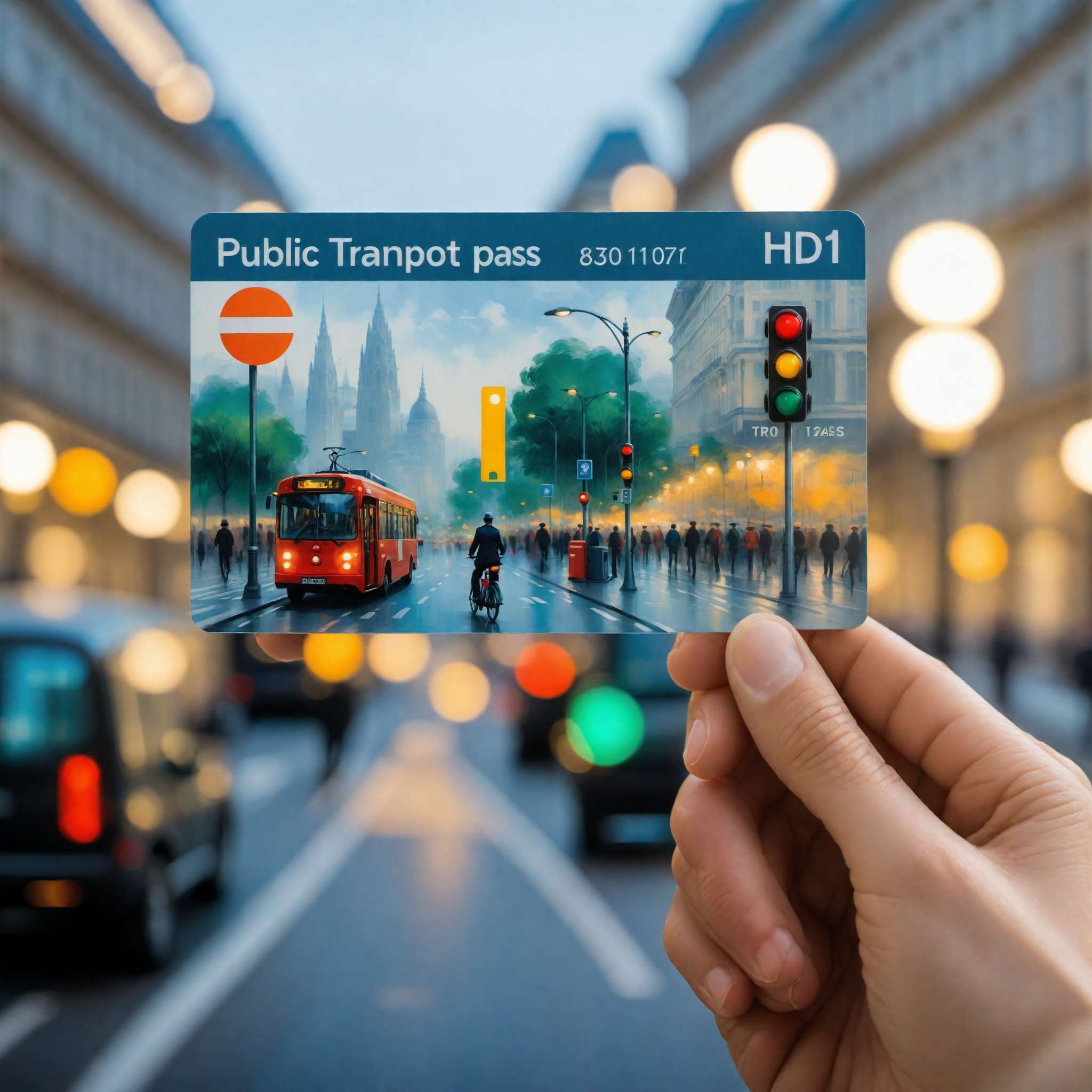Zombie Bunny is Reader-supported and may earn an affiliate commission through links on our site.

Penny Pinching Pros: How to Save Money Like a Pro
Join the ranks of penny pinching pros with our practical tips. Manage your finances like a pro. #savingmoney #budgeting
Discover how to become a penny pinching pro with our comprehensive guide. We’ll explore the art of saving and making smart financial decisions. It’s not about living a life of scarcity but about understanding the value of each penny, ensuring you’re getting the most out of your hard-earned money. From creating a budget, understanding your expenses, to adopting smart shopping strategies, and investing in your future, this blog will provide you with valuable insights to transform your financial life. It’s not a get-rich-quick scheme, but a journey towards long-term financial wellbeing. Start today and witness how the art of saving can empower you towards financial freedom.
Introduction: The Art of Penny Pinching

© Copyright , ZombieBunny.Org
Why saving money is essential
Saving money is a fundamental aspect of securing a financially stable future. It’s not just about accumulating wealth, but about ensuring a safety net for unexpected occurrences. In an unpredictable world, having savings equates to possessing a cushion that shields you from financial shocks. Whether it’s an unexpected medical bill, a substantial car repair, or sudden job loss, your savings can be the buffer that prevents these situations from turning into financial crises.
Moreover, saving allows you to achieve the financial freedom necessary to make significant life choices without fear. Want to go back to school, start a business, or perhaps retire early? Your savings can make these dreams a reality. It’s also about reducing financial stress. Knowing you have a nest egg can considerably lessen the worry of living paycheck to paycheck. It gives you space to breathe, making room for better financial decisions. So, start your journey towards becoming a penny pinching pro today, and witness how the art of saving can transform your financial life and beyond.
What penny pinching is
Penny pinching, contrary to some misconceptions, is not about depriving yourself of enjoyment or living a life of scarcity. Instead, it’s about making informed and smart financial decisions that allow you to save more of your hard-earned money. It’s about understanding the value of each penny and ensuring that you’re getting the most out of your income.
At its core, penny pinching involves a mindset shift. It’s about recognizing that small savings can add up over time, leading to significant financial benefits. It’s about choosing to forego that expensive cup of coffee every day and opting to make it at home instead. It’s about comparing prices before making purchases, utilizing coupons, and taking advantage of sales and discounts.
Penny pinching is not a get-rich-quick scheme; rather, it’s a lifestyle choice aimed at long-term financial wellbeing. It’s about making small, sustainable changes to your spending habits that can have a significant impact over time. It’s the art of stretching your dollar further, making each penny work for you towards achieving your financial goals. So, don’t be deterred by the term ‘penny pinching.’ Embrace it as a positive and empowering step towards financial freedom.
How anyone can become a pro at penny pinching
Becoming a pro at penny pinching is achievable for anyone, regardless of income level or financial knowledge. It starts with a desire to improve your financial situation and a commitment to making lasting changes to your spending habits. It’s about understanding where your money is going and making decisions that increase the efficiency of each dollar spent.
One of the first steps to becoming a penny pinching pro is creating a budget. This simple yet effective tool allows you to see where your money is going, identify areas where you can cut back, and plan for savings. It’s about making your money work for you, not the other way around.
Another essential step is educating yourself about money. The more you understand about finances, the better equipped you’ll be to make smart decisions. This doesn’t mean you need a degree in economics – just a willingness to learn and use resources available to you.
Finally, remember that becoming a penny pinching pro is a journey, not a destination. It’s about making small, consistent changes that add up over time. Don’t be discouraged if you don’t see immediate results. Stay committed, keep learning, and over time, you’ll see your savings grow and your financial stress decrease. Embrace the penny pinching lifestyle and watch as it transforms your financial future.
Understanding Your Finances: The First Step to Saving

© Copyright , ZombieBunny.Org
How to calculate your income and expenses
Calculating your income and expenses is the cornerstone of any successful financial plan. This process, often referred to as budgeting, helps you understand where your money comes from and where it’s going. It’s an essential step in becoming a penny pinching pro, as it allows you to identify potential savings and make informed financial decisions.
Start by calculating your income. This should include any money you regularly receive, such as wages, salaries, freelance income, rental income, or benefits. If your income fluctuates, try to estimate an average monthly income. Keep in mind, it’s always better to underestimate your income and overestimate your expenses when budgeting.
Next, list all your expenses. Start with fixed expenses, which are the same amount every month like rent or mortgage payments, car payments, or insurance premiums. Then, consider variable expenses, which change from month to month, like groceries, utilities, and entertainment. Don’t forget about irregular expenses like car maintenance or medical bills. These can be estimated based on past expenses or set amounts.
Subtract your total expenses from your total income to see if you have a surplus or deficit. A surplus indicates that you’re living within your means, while a deficit shows you’re spending more than you earn. Understanding these figures is critical in making informed decisions about where to cut back and how to allocate your resources effectively. The power of penny pinching lies in the grasp of these numbers.
The importance of creating a budget
Creating a budget is a crucial step in managing your finances and becoming a penny pinching pro. A budget serves as a financial roadmap, guiding you towards your monetary goals while helping you avoid unnecessary spending. Without a budget, it’s easy to lose track of where your money is going, making it more challenging to save and plan for the future.
A well-structured budget provides a clear picture of your income versus expenses, letting you see if you’re living within your means or spending beyond them. It enables you to identify areas of wasteful spending and opportunities for savings, both key aspects of successful penny pinching.
Budgeting can also help alleviate financial stress. Knowing that you have a plan for your money can provide a sense of security and control, reducing anxiety about unexpected expenses or financial emergencies. It gives you the freedom to spend money on the things you enjoy without guilt, knowing that your essential expenses are covered.
Furthermore, a budget can help you achieve your financial goals, whether that’s saving for a vacation, paying off debt, or building an emergency fund. By allocating a portion of your income towards these goals each month, you can make steady progress without feeling overwhelmed.
Don’t view budgeting as a restriction; instead, see it as a tool for financial freedom. With a budget, you’re in control of your money, not the other way around. This control is the essence of becoming a penny pinching pro.
How to track your expenses
Tracking your expenses is an integral part of successful personal finance management and a key strategy in becoming a penny pinching pro. By keeping a detailed record of where your money is going, you’ll gain a clearer understanding of your spending habits, making it easier to identify areas where you can save.
Start by choosing a method to track your expenses. This could be as simple as using a notebook and pen, or you could utilize one of the many budgeting apps available. The key is to choose a method that works for you and stick with it.
Next, make it a habit to record all your expenses, no matter how small. From the morning coffee to monthly rent, every penny counts. Be sure to categorize your expenses as well. Categories may include housing, groceries, transportation, entertainment, and more. This will help you see where most of your money is going and where potential savings lie.
Review your tracked expenses regularly. This could be on a weekly or monthly basis. Regular reviews allow you to spot trends, identify problem areas, and adjust your spending habits accordingly. Remember, the goal of tracking your expenses is not to judge your spending but to understand it better.
Keeping a close eye on your expenses can be a revealing exercise. It can help you identify leaks in your budget and provide valuable insights into your spending habits, ultimately leading you on a path towards effective penny pinching.
Mastering the Grocery Game: Cut Costs without Cutting Meals

© Copyright , ZombieBunny.Org
Smart shopping strategies
Adopting smart shopping strategies is an effective way to save money, especially when it comes to grocery shopping. As a penny pinching pro, you’ll want to maximize the value you get from every dollar spent, and the grocery store is a perfect place to do just that.
Start by planning your meals for the week. This allows you to build a shopping list based on what you need, reducing the likelihood of impulse purchases. Stick to your list when you shop and avoid the temptation of unneeded items, no matter how appealing the sale might be.
Next, take advantage of sales and discounts, but do so wisely. Just because an item is on sale doesn’t necessarily mean it’s a good deal. Always compare prices and consider whether the discounted item is something you truly need and will use.
Consider buying store brands instead of name brands. Often, the store brand products are just as good as their name brand counterparts but at a fraction of the cost. Don’t let brand loyalty cost you more than necessary.
Lastly, consider buying in bulk for non-perishable items or goods you use frequently. This can lead to significant savings over time. However, always ensure that you’ll use up what you buy before it expires.
By adopting these smart shopping strategies, you can significantly cut your grocery bills without sacrificing the quality or quantity of your meals. Now that’s smart shopping!
The art of meal planning and how it can save money
Mastering the art of meal planning is a powerful tool in the penny pinching pro’s arsenal. It allows you to streamline your grocery shopping, reduce food waste, and save money, all while enjoying a variety of healthy meals.
To start, plan your meals for the week ahead. Consider what you already have in your pantry and refrigerator, and build meals around these items. This helps you use up what you have before it goes bad, reducing waste and saving money.
Next, create a shopping list based on your meal plan. Stick to this list when shopping to avoid impulse purchases and ensure you’re only buying what you need. Remember to account for snacks, drinks, and any necessary ingredients for your planned meals.
Meal planning also allows you to take advantage of bulk buying and sales. If you know you’ll be making a dish that requires a specific ingredient, you can buy it in bulk or when it’s on sale, knowing it won’t go to waste.
Don’t forget to plan for leftovers, too. If you’re making a large meal, plan to have the leftovers for lunch the next day or repurpose them into a new meal. This not only saves money but also saves time on cooking and cleaning.
By embracing the art of meal planning, you’ll be well on your way to becoming a penny pinching pro, saving money without sacrificing the quality or variety of your meals.
How to effectively use coupons and deals
Coupons and deals can be a boon for the savvy shopper and a key strategy for the penny pinching pro. However, to truly benefit from these savings, it’s crucial to use them effectively and avoid common pitfalls.
The first rule of using coupons and deals is to only use them for items you actually need. It’s easy to be lured into buying an unnecessary product because there’s a coupon available, but this can lead to overspending and waste. Always ask yourself if you would buy the item without the discount. If the answer is no, it’s probably not a deal worth pursuing.
Next, always check the fine print. Some deals may require you to buy in large quantities or may not be as advantageous as they first appear. Be sure you understand the terms of the deal before making your purchase.
Take advantage of digital coupons and deals, too. Many grocery stores offer their own apps with digital coupons, and there are numerous coupon apps and websites available. These platforms can provide significant savings and are often more convenient than traditional paper coupons.
Lastly, remember to combine deals when possible. If an item is on sale, and you have a manufacturer’s coupon and a store coupon, you can stack these discounts for even greater savings.
Using coupons and deals effectively is an art form, but with practice, you can master it and see the impact on your grocery bills. Embrace these savings strategies, and you’ll be well on your way to becoming a penny pinching pro.
Energy Efficiency: Save Money by Saving Power

© Copyright , ZombieBunny.Org
Energy saving tips at home
Implementing energy-saving tips at home is a practical and effective way to reduce your monthly utility bills, contributing to your overall penny pinching strategy. Here are some easy-to-implement tips to help you save power and money.
Firstly, turn off and unplug electronics when they’re not in use. Many devices continue to draw power even when they’re turned off, a phenomenon known as ‘phantom power’. By unplugging these devices or using a power strip with an on/off switch, you can reduce this energy waste.
Next, take advantage of natural light during the day instead of switching on lights. Open your blinds or curtains and let the sunshine in. Not only will this save electricity, but it can also help heat your home in the colder months.
Consider investing in energy-efficient appliances and light bulbs. They may cost a bit more upfront, but they use less energy and can save you money in the long run. Additionally, keep your appliances in good working order; regular maintenance can ensure they operate efficiently and last longer.
Lastly, be mindful of your heating and cooling costs. Adjusting your thermostat by a few degrees can lead to significant savings. In the winter, try lowering your thermostat and wearing warmer clothes. In the summer, use fans and close curtains to keep your home cooler.
By incorporating these energy-saving tips at home, you can reduce your utility bills and become a true penny pinching pro. Every little bit of energy saved translates into money saved, making your home more efficient and your wallet happier.
Investing in energy efficient appliances
Investing in energy-efficient appliances is a smart move for the penny pinching pro. While these appliances may come with a higher upfront cost, the long-term energy savings they offer can more than make up for it.
Energy-efficient appliances are designed to use less electricity, gas, or water to perform the same tasks as their less efficient counterparts. This not only reduces your utility bills but also contributes to a more sustainable planet by reducing your overall energy consumption.
When shopping for energy-efficient appliances, look for the Energy Star label. This label indicates that the appliance meets or exceeds energy efficiency standards set by the Environmental Protection Agency (EPA). Energy Star appliances use 10 to 50% less energy and water than standard models, leading to significant savings over the life of the appliance.
In addition to the energy savings, many utility companies and governments offer rebates, tax credits, or other incentives for purchasing energy-efficient appliances, further offsetting the initial cost.
Remember, the most efficient appliance is the one you already own. If your current appliances are still in good working order, it’s often more cost-effective and environmentally friendly to keep them. However, when it’s time to replace them, choosing energy-efficient models is a smart investment.
By investing in energy-efficient appliances, you’re not only saving money but also contributing to a more sustainable future. It’s a win-win for the penny pinching pro and the planet.
Understanding your energy bill and how to reduce it
Understanding your energy bill is a crucial step towards reducing it and saving money in the process. Each bill provides a wealth of information about your energy consumption, and by interpreting this data, you can identify opportunities for savings.
Firstly, familiarize yourself with the different sections of your bill. This typically includes your usage for the billing period, comparisons to previous periods, and detailed breakdowns of charges. If there’s anything you don’t understand, don’t hesitate to contact your energy provider for clarification.
Your bill will likely show your energy usage in kilowatt-hours (kWh). By monitoring this over time, you can identify trends, such as increased usage in certain months. This can help you plan for higher bills and identify times when you could cut back.
To reduce your bill, consider energy-efficient practices such as using appliances in off-peak hours, when electricity rates are often lower. Also, remember to turn off lights and unplug devices when not in use, and consider investing in energy-efficient appliances.
Another great way to reduce your energy bill is to conduct an energy audit. This can either be done by a professional or on your own, and it can help identify areas in your home where energy is being wasted.
By understanding your energy bill and implementing energy-saving practices, you can effectively reduce your bill and save money. This is a key aspect of becoming a penny pinching pro and achieving your financial goals.
Transportation Tricks: Keep Moving without Breaking the Bank

© Copyright , ZombieBunny.Org
Affordable and eco-friendly transportation options
Transportation can be a significant expenditure, but there are affordable and eco-friendly options that can help you save money and reduce your carbon footprint. By choosing these alternatives, you’re not only becoming a penny pinching pro but also contributing to a more sustainable world.
One of the most cost-effective and eco-friendly transportation options is cycling. Bicycles are not only cheap to buy and maintain, but they also provide a great form of exercise. If your commute is too long for a bike, consider using it for shorter trips, like running errands.
Public transportation is another affordable and eco-friendly option. Buses, trams, and trains can be significantly cheaper than owning and operating a car, particularly in urban areas. They also have a lower carbon footprint, as they can move many people at once.
Carpooling is another option to consider. By sharing rides with others, you can split the cost of gas and reduce the number of cars on the road, leading to lower emissions.
Lastly, if you do own a car, consider ways to make it more eco-friendly and cost-effective. Regular maintenance can improve fuel efficiency, and driving smoothly and efficiently can also reduce fuel consumption.
By adopting these affordable and eco-friendly transportation options, you can significantly reduce your transportation costs and environmental impact. It’s a win-win for your budget and the planet, making you a true penny pinching pro.
How to save on fuel costs
Fuel costs are a significant part of most transportation budgets, but there are several strategies you can use to reduce these costs and become a penny pinching pro.
One of the most effective ways to save on fuel costs is to improve your driving habits. Smooth, steady driving without rapid acceleration or hard braking can significantly improve your car’s fuel efficiency. Avoiding high speeds can also reduce fuel consumption.
Keeping your car in good condition is another way to save on fuel costs. Regular maintenance, including oil changes and tire rotations, can improve your car’s fuel efficiency. Keeping your tires properly inflated can also make a noticeable difference in your fuel consumption.
Planning your routes can also lead to savings. By combining errands into one trip, you can reduce the amount of time your car spends idling and avoid unnecessary driving. If possible, try to travel during off-peak times to avoid heavy traffic, which can consume more fuel.
Another strategy is to monitor fuel prices in your area and fill up when prices are low. There are many apps and websites that can help you track local fuel prices.
By implementing these strategies, you can significantly reduce your fuel costs, helping you to save money and move closer to your financial goals. These savings strategies are an essential part of the journey to becoming a penny pinching pro.
Tips on maintaining your vehicle to avoid costly repairs
Maintaining your vehicle is a key strategy in avoiding costly repairs and keeping transportation costs low. By taking care of your vehicle, you can prolong its life, improve its performance, and prevent minor issues from becoming major problems. Here are some tips to help you become a penny pinching pro when it comes to vehicle maintenance.
Firstly, follow the manufacturer’s recommended maintenance schedule. This includes regular oil changes, brake checks, and tire rotations. These routine checks can help detect potential issues early and keep your vehicle running smoothly.
Keep an eye on your tires. Properly inflated and well-aligned tires improve fuel efficiency, prolong tire life, and make your vehicle safer to drive. Regularly check your tire pressure and alignment to ensure they’re at the recommended levels.
Pay attention to your vehicle’s fluids. This includes not only oil, but also coolant, brake fluid, power steering fluid, and windshield washer fluid. Regularly checking and replacing these fluids can prevent damage to your vehicle’s components.
Lastly, keep your vehicle clean. Regular washing and waxing can protect your vehicle’s paint and undercarriage from damage caused by dirt, salt, and other debris. A clean vehicle isn’t just about aesthetics – it can also help prevent rust and other damage that could lead to costly repairs.
By following these maintenance tips, you can keep your vehicle in top shape and avoid costly repairs, helping you save money in the long run. It’s a practical and essential step towards becoming a penny pinching pro.
Smart Shopping: Save Big on Everyday Essentials

© Copyright , ZombieBunny.Org
How to find the best deals
Finding the best deals is an art form that every penny pinching pro needs to master. Whether it’s for groceries, clothing, or electronics, getting the best price can save you significant amounts of money over time.
Start by doing your research. Compare prices at different stores and online to ensure you’re getting the best deal. Keep in mind that the cheapest price isn’t always the best value. Consider the product’s quality and longevity, as well as any extra costs like shipping or warranties.
Utilize price tracking tools and apps. These can alert you to price drops, sales, and discounts on items you’re interested in. Many of these tools offer price history data, so you can see if the current deal is really as good as it seems.
Sign up for store newsletters and loyalty programs. These often provide exclusive deals and early access to sales. However, remember to be selective – too many emails can lead to impulse purchases that aren’t in your budget.
Don’t forget about coupons and promo codes. These can often be found in store flyers, on coupon websites, or directly on the store’s website. Just remember to only use coupons for items you were already planning to buy – a deal isn’t a deal if it leads you to spend money you wouldn’t have otherwise.
By implementing these strategies, you can become a pro at finding the best deals, helping you save money on your everyday essentials and move closer to your financial goals.
The benefits of online shopping and discount apps
Online shopping and discount apps have revolutionized the way we shop, offering a wealth of benefits for the penny pinching pro. They provide a convenient way to compare prices, find deals, and save money on a wide range of products.
With online shopping, you have a world of products at your fingertips. You can easily compare prices across multiple retailers to ensure you’re getting the best deal. Plus, online stores often offer exclusive deals and discounts not available in physical stores.
Discount apps take this a step further, aggregating deals and discounts from various sources in one place. They can alert you to sales on items you’re interested in, provide digital coupons, and even offer cashback or rewards on purchases. Some apps also offer price tracking, letting you see price history and notifying you when items drop in price.
Another benefit is the time and money you save on travel. With online shopping, you can shop from the comfort of your own home, eliminating the need to travel to multiple stores, saving you both time and fuel costs.
However, while online shopping and discount apps offer many benefits, it’s also important to shop responsibly. Stick to your budget, avoid impulse purchases, and remember to factor in any shipping costs.
Embracing online shopping and discount apps can lead to significant savings, making them powerful tools in your journey to becoming a penny pinching pro.
When to buy in bulk and when to avoid it
Buying in bulk can offer significant savings, making it an appealing strategy for the penny pinching pro. However, it’s important to know when to take advantage of bulk buying and when to avoid it.
Bulk buying is most beneficial for non-perishable items and goods you use frequently. This could include household items like toilet paper, cleaning supplies, or canned goods, as well as pantry staples like rice, pasta, and spices. Buying these items in bulk can lead to substantial savings over time.
However, bulk buying should be avoided for perishable items unless you’re certain you can use them before they spoil. Buying a large quantity of fresh produce or dairy products, for example, can lead to waste if you’re unable to consume them in time. Similarly, avoid buying in bulk if you’re trying a product for the first time. You don’t want to be stuck with a large quantity of an item you don’t like.
Remember, bulk buying only leads to savings if you use what you buy. It’s also important to have adequate storage space for bulk purchases. Overcrowding your pantry or refrigerator can lead to forgotten items and waste.
By strategically buying in bulk, you can save money on items you use regularly and reduce the number of trips to the store, saving you both time and money. This smart shopping strategy is a key part of becoming a penny pinching pro.
Frugal Fun: Enjoy Life without Emptying Your Wallet

© Copyright , ZombieBunny.Org
How to have fun on a budget
Having fun doesn’t have to break the bank. With a little creativity and planning, you can enjoy a wealth of activities on a budget, proving that being a penny pinching pro doesn’t mean sacrificing enjoyment.
A great place to start is by exploring the outdoors. Activities like hiking, biking, or picnicking in a local park are not only budget-friendly but also offer health benefits. Similarly, check out free or low-cost community events, such as farmer’s markets, local festivals, or free museum days.
Consider hosting a game night or potluck dinner with friends instead of going out. Not only will this save you money, but it also allows for a more intimate and relaxed setting. If movies are your thing, consider a movie night at home with rented or streamed films rather than expensive cinema tickets.
Take full advantage of your local library. Beyond books, many libraries offer free or low-cost activities and resources, from movie rentals and language courses to craft classes and book clubs.
Lastly, be sure to budget for fun. Setting aside a small amount of money for entertainment ensures that you can enjoy yourself without feeling guilty or straying from your financial goals.
Remember, the goal of being a penny pinching pro is not to deprive yourself of enjoyment, but to find smart, affordable ways to have fun. With these tips, you can enjoy life while still keeping your wallet happy.
Free and low-cost entertainment options
As a penny pinching pro, identifying free and low-cost entertainment options can lead to significant savings while still allowing you to enjoy your downtime. Here are some ideas to help you have fun without emptying your wallet.
Look for free events in your community. Many towns and cities host free concerts, outdoor movie nights, festivals, and other events, particularly during the summer months. Local libraries often offer free or low-cost workshops, classes, or clubs that can be both educational and entertaining.
Take advantage of the great outdoors. Hiking, biking, or simply taking a walk in a local park or nature reserve are excellent ways to enjoy your free time at little to no cost. If you’re near a beach or lake, swimming and sunbathing can be great free activities.
Consider low-cost subscription services for movies, music, or books. While these do have a cost, they can provide endless entertainment for a fraction of the price of going to the cinema, concerts, or buying books.
Explore volunteer opportunities. Not only does this provide a free way to spend your time, but it also allows you to give back to your community and can be incredibly fulfilling.
Remember to trade and share with friends. Swap books, exchange video games, or host a clothing swap to keep things fresh without spending money.
By identifying and taking advantage of free and low-cost entertainment options, you can enjoy your leisure time without straying from your budget, proving that being frugal doesn’t mean sacrificing fun.
The benefits of socializing without overspending
Socializing is an important aspect of our lives, contributing to our mental and emotional well-being. However, social activities often come with a price tag. As a penny pinching pro, it’s essential to find ways to socialize without overspending.
One of the most cost-effective ways to socialize is by hosting a get-together at home. Whether it’s a potluck dinner, movie night, or game night, hosting at home can be significantly cheaper than going out. It also offers a more intimate setting, allowing for quality conversations and bonding.
Outdoor activities also provide a great platform for socializing on a budget. Organizing a hike, bike ride, or picnic with friends can be both fun and inexpensive. These activities also come with the added benefit of exercise and fresh air.
Another way to socialize without overspending is by volunteering together. This not only provides a free activity, but also allows you to give back to your community and bond over a shared experience.
Remember to set a budget when you do decide to go out. Having a spending limit can prevent you from overspending and help you make more conscious decisions about your money.
Socializing without overspending is not only possible, but it can also lead to more meaningful and fulfilling experiences. Being a penny pinching pro isn’t about missing out on fun, it’s about finding the balance between enjoying life and maintaining financial health.
Saving for the Future: Secure Your Financial Freedom

© Copyright , ZombieBunny.Org
Why it’s important to start saving for retirement now
Saving for retirement is a critical component of any financial plan, and the sooner you start, the better. Even if retirement seems far off, beginning to save now can have a significant impact on your financial security in your later years.
One reason to start saving for retirement now is the power of compound interest. This is where the interest you earn on your savings also earns interest. Over time, this can lead to significant growth in your retirement fund. The more time your money has to grow, the more you can benefit from compound interest.
Another reason is that saving for retirement often comes with tax advantages. Whether it’s a 401(k) or an Individual Retirement Account (IRA), these accounts offer tax benefits that can help your retirement savings grow more efficiently.
Starting early also allows you to take on more risk in your investment portfolio. While all investments come with risk, younger investors have more time to recover from any potential losses, allowing for potentially higher returns over the long term.
Lastly, starting to save for retirement now helps establish good financial habits. Regularly setting aside money for the future can help you live within your means and prioritize your financial goals.
By starting to save for retirement now, you’re investing in your future financial freedom. As a penny pinching pro, this is an essential step towards securing a financially stable retirement.
How to take advantage of employer matching funds
Employer matching funds are a powerful tool in your retirement saving strategy. By understanding how they work and how to take full advantage of them, you can significantly boost your retirement savings.
Many employers offer a retirement savings plan, such as a 401(k), where they match a percentage of the employee’s contributions. In essence, this is free money that can significantly increase your retirement fund.
To take full advantage of employer matching funds, first, understand your employer’s match policy. This typically involves a certain percentage match up to a specific amount of your salary. For example, your employer may match 50% of your contributions up to 6% of your salary.
To maximize this benefit, aim to contribute at least as much as your employer is willing to match. Not doing so is essentially leaving free money on the table. If you can’t afford to contribute the maximum amount right away, consider increasing your contributions gradually until you reach that goal.
Remember, the funds from employer matching often have a vesting schedule, meaning you only own a percentage of the employer contributions based on your years of service. Be sure to understand your company’s vesting schedule to know when the matched funds are fully yours.
Taking full advantage of employer matching funds is a key strategy in building a substantial retirement fund. As a penny pinching pro, this is an opportunity you won’t want to miss.
Understanding the different types of retirement accounts
Understanding the different types of retirement accounts is a key step towards securing your financial future. Each type of account comes with its own benefits and limitations, making it important to choose the one that best aligns with your financial goals and situation.
A 401(k) is a type of retirement account offered by many employers. These accounts are funded with pre-tax dollars, which can lower your taxable income. Many employers also offer matching contributions, further boosting your savings. However, you’ll pay taxes when you withdraw the funds in retirement.
Individual Retirement Accounts (IRAs) are retirement accounts you open on your own. There are two main types: Traditional and Roth. With a Traditional IRA, you make contributions with pre-tax dollars, lowering your current taxable income, but you’ll pay taxes upon withdrawal. A Roth IRA, on the other hand, is funded with after-tax dollars. While this doesn’t lower your taxable income now, it allows for tax-free withdrawals in retirement, provided certain conditions are met.
For self-employed individuals or small business owners, there are additional options like SEP IRAs or Solo 401(k)s. These accounts offer higher contribution limits than traditional IRAs and can be a great way to save for retirement if you’re self-employed.
Understanding these different types of retirement accounts can help you make informed decisions about where to invest your retirement savings. As a penny pinching pro, this knowledge is an invaluable tool in securing your financial freedom.
Emergency Funds: The Safety Net for Unexpected Expenses

© Copyright , ZombieBunny.Org
The importance of having an emergency fund
An emergency fund is a financial safety net designed to cover unexpected expenses, and having one is a critical part of any sound financial plan. Whether it’s a sudden job loss, medical expense, or car repair, an emergency fund can help you weather these financial storms without going into debt.
One of the key benefits of an emergency fund is peace of mind. Knowing that you have funds set aside to cover unexpected expenses can reduce financial stress and provide a sense of security. It allows you to handle life’s surprises without derailing your financial goals.
Typically, it’s recommended to have three to six months’ worth of living expenses saved in your emergency fund. However, the exact amount can vary based on your individual circumstances, including your job stability and lifestyle.
Building an emergency fund may seem daunting, but starting small can make it more manageable. Even saving a small amount from each paycheck can add up over time. Consider setting up automatic transfers to your savings account to make the process easier.
Remember, your emergency fund should be easily accessible, but not so accessible that you’re tempted to dip into it for non-emergencies. Consider keeping it in a separate savings account to avoid temptation.
Having an emergency fund is an essential part of being a penny pinching pro. It’s an investment in your financial security and a safeguard against life’s unexpected expenses.
How to start and grow your emergency fund
Starting and growing an emergency fund is a crucial step towards financial stability, and it’s easier than you might think. With a few simple strategies, you can build a financial safety net that can help you handle unexpected expenses.
The first step is determining how much you need to save. A good rule of thumb is to aim for three to six months’ worth of living expenses. However, the exact amount will depend on your individual circumstances, including your income stability and lifestyle.
Once you have a target amount in mind, create a savings plan. Consider setting up automatic transfers to a dedicated savings account every time you get paid. This ‘pay yourself first’ strategy ensures that you’re consistently adding to your emergency fund.
Don’t be discouraged if you can’t save a lot at first. Every little bit helps, and the goal is to gradually grow your fund over time. As you become more comfortable with your budget, look for opportunities to increase your contributions.
Remember to keep your emergency fund in a separate, easily accessible account. It should be liquid, meaning you can quickly and easily withdraw money without penalties. A high-yield savings account is a great option because it offers higher interest rates than a typical savings account.
By making regular contributions and resisting the temptation to dip into the fund for non-emergencies, you can grow your emergency fund over time. As a penny pinching pro, this is a critical step in securing your financial future.
How much money should be in your emergency fund
Determining how much money to have in your emergency fund is an important step in your financial planning process. Having an adequate emergency fund can provide you with a financial safety net in case of unforeseen expenses or circumstances.
A common rule of thumb is to have enough money in your emergency fund to cover three to six months’ worth of living expenses. This includes necessary expenses like housing, food, utilities, transportation, and healthcare. This can provide a buffer in case of job loss or a significant unplanned expense.
However, the exact amount you should save can vary based on your personal circumstances. If your job is unstable or your income fluctuates, you may want to save more. Likewise, if you have dependents or high medical expenses, a larger emergency fund may be necessary.
It’s also important to reassess your emergency fund periodically, especially after major life changes like marriage, having a child, or buying a home. These events can significantly impact your financial situation and may require you to adjust the size of your emergency fund.
Remember, the goal of an emergency fund is to provide financial security in case of unexpected expenses. By having an adequate emergency fund, you can navigate these situations without going into debt or dipping into your long-term savings. As a penny pinching pro, building and maintaining an emergency fund is a key part of securing your financial future.
Conclusion: Becoming a Penny Pinching Pro

© Copyright , ZombieBunny.Org
Recap of the penny pinching strategies discussed
We’ve covered a wide range of penny pinching strategies that can help you save money and become a financial pro. From transportation and shopping tips to saving for retirement and building an emergency fund, each strategy plays a vital role in shaping your financial future.
Implementing efficient driving habits, maintaining your vehicle, and carefully planning your routes can help reduce transportation costs. In terms of shopping, understanding when to buy in bulk, how to find the best deals, and the benefits of online shopping and discount apps can lead to significant savings.
When it comes to entertainment and socializing, there are many free and low-cost options available. Moreover, hosting get-togethers at home or volunteering can provide fulfilling social experiences without overspending.
Saving for the future is also crucial. Starting your retirement savings early, taking advantage of employer matching funds, and understanding the different types of retirement accounts can set you on the path to financial freedom. Likewise, building an emergency fund provides a safety net for unexpected expenses.
Each of these strategies contributes to a holistic approach to financial health. The key is to start small, remain consistent, and make adjustments as necessary. By incorporating these penny pinching strategies into your everyday life, you can take control of your finances, save money, and achieve your financial goals.
The benefits of becoming a penny pinching pro
Becoming a penny pinching pro has many benefits that go beyond simply saving money. It’s about cultivating financial awareness, developing smart spending habits, and securing your financial future.
One of the key benefits is the financial independence that comes with having control over your money. By understanding where your money goes and making conscious decisions about your spending, you have the power to shape your financial future.
Building an emergency fund and saving for retirement are additional benefits. These steps provide financial security, helping you handle unexpected expenses and prepare for your future. This can reduce financial stress and provide peace of mind.
Becoming a penny pinching pro also helps you prioritize your spending. By recognizing the difference between needs and wants, you can make more informed decisions about your purchases. This can lead to greater satisfaction in the things you do choose to spend money on.
Lastly, becoming a penny pinching pro can improve your quality of life. By finding free and low-cost ways to have fun, socialize, and enjoy life, you can experience fulfillment without overspending or going into debt.
In essence, becoming a penny pinching pro is about more than just saving money. It’s about living a financially balanced life, where you have the freedom to enjoy today while planning for tomorrow. By adopting these strategies, you can become a master of your finances and secure your financial future.
Final words of encouragement and advice
Embarking on a journey to become a penny pinching pro is a commendable step towards financial freedom. It’s a path that requires discipline, patience, and a willingness to learn. But remember, it’s not about deprivation – it’s about making smart, informed decisions that align with your financial goals.
Start small and celebrate your victories along the way. Whether it’s successfully building an emergency fund, reducing your transportation costs, or finding free ways to have fun, every step you take is a step towards financial security.
Don’t be discouraged by setbacks. Financial journeys are rarely linear, and there will be ups and downs. The key is to learn from these experiences and adjust your strategies accordingly.
Continue educating yourself about personal finance. The more you know, the better equipped you’ll be to make smart financial decisions. There are many resources available, from blogs and books to podcasts and financial courses, that can expand your knowledge and confidence.
Lastly, remember to enjoy the journey. Savvy spending and saving should empower you, not restrict you. It’s about finding the balance between enjoying the present and planning for the future.
Becoming a penny pinching pro is an exciting journey, and you’re already on your way. Keep going, stay focused, and remember – every penny counts. Here’s to your financial freedom and becoming a true penny pinching pro.
Please support our site and purchase something from our store.







